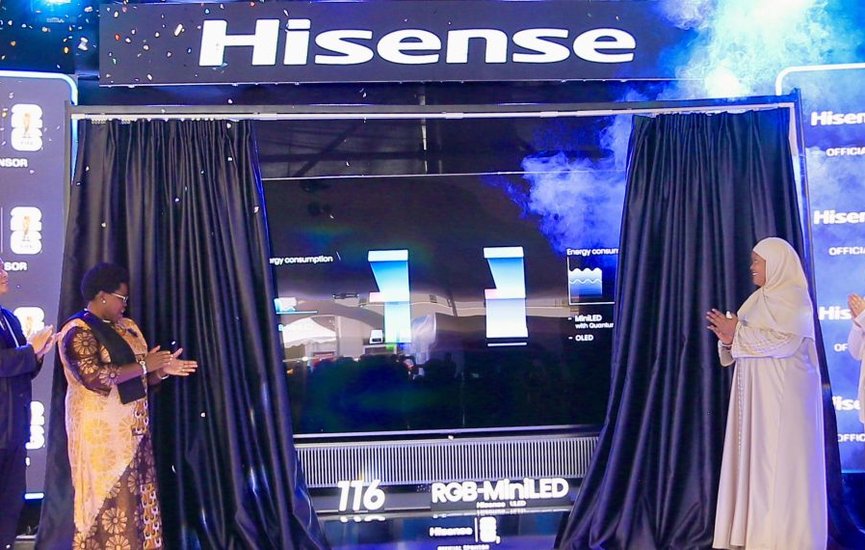Kampala, Uganda — Global electronics manufacturer Hisense has officially launched the 116-inch 116UX RGB Mini-LED television in Uganda, making its East African debut and signaling the brand’s growing interest in combining innovation with social impact.
The launch event took place in Kampala on September 19, drawing participation from government officials, education stakeholders, and tech industry representatives. Officiated by Deputy Prime Minister Rukia Nakadama, the event showcased the capabilities of what is currently the world’s largest Mini-LED TV, positioning Uganda as an early adopter of advanced display technology in the region.
At the event, Hisense announced the donation of 50 smart televisions to schools across Uganda, in partnership with local distributor SmartElectronics Ltd. This gesture reflects the company’s commitment to supporting Uganda’s digital transformation, particularly in the education sector. According to Hisense representatives, the initiative is designed to enhance digital learning by improving access to modern tools in classrooms, especially in underserved communities.
State Minister for Primary Education, Dr. Joyce Moriku Kaducu, welcomed the move, describing it as a timely and impactful contribution to Uganda’s education system. She emphasized that the integration of digital tools in learning environments is critical to equipping learners with relevant 21st-century skills and bridging the digital divide.
The 116UX TV, which features TriChroma RGB Mini-LED technology, is being positioned as a flagship product within Hisense’s global lineup. It offers ultra-high brightness, enhanced contrast, and vivid color reproduction, alongside features like AI-driven processing and a solar-powered remote control. While the product is primarily marketed as a high-end entertainment display, Hisense emphasized its potential use in educational, collaborative, and commercial settings.
In addition to the product launch and donation, Hisense shared its broader vision for supporting innovation in Uganda. The company revealed plans to establish a Technology Museum and explore the development of co-working spaces to support young innovators and entrepreneurs. These plans highlight a long-term commitment to contributing to Uganda’s digital and technological growth beyond product sales.
Industry analysts view Hisense’s efforts as a blend of strategic market entry and corporate social responsibility. According to tech analyst Martin Wabwire, the move not only raises brand visibility but also tests market readiness for high-end tech products, particularly among Uganda’s increasingly tech-aware population.
The event has generated positive reactions from education and technology circles, with many pointing to it as an example of how public-private partnerships can support national development goals. Hisense’s decision to combine a high-profile product launch with direct contributions to the education sector suggests a model that other companies may look to follow.
The launch of the 116UX Mini-LED TV in Kampala is not just about introducing cutting-edge technology to the Ugandan market. It is a broader statement about how technology, education, and corporate responsibility can intersect to support meaningful development. As the donated smart TVs begin arriving in classrooms, stakeholders across sectors will be watching closely to see the real-world impact of this initiative.
